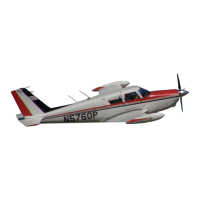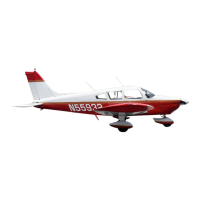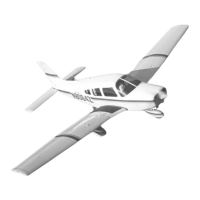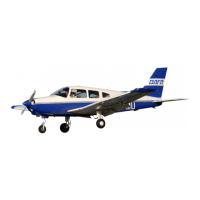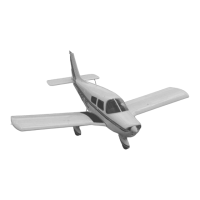A~rcralt Publicalions
P~pcr Comanchc
250
(Early Model)
Section
-
5
Performance
FLIGHT PLANNING EXAMPLE
(Cont.)
3.)
Climb:
Planned Cruise Altitude 7000
ft
MSL
...................................................................
Average Rate of Climb (Figure 5-09)
1
100 ftlmin
4.)
Cruise:
Cruise Conditions:
Pressure Altitude
..............................................................................................
7000
ft
MSL
Temperature
...................
..
.................................................
40 Degrees F. (05 Degrees
C.)
Expected Headwind Component En Route
...................................................................
None
**
NOTE
**
Fuel consumption rates as shown by Lycoming (Figure 5-05) are based on a full rich mixture
and standard sea level conditions.
Power Setting
....................
..
..........
Time to Cruise
.........................
................
135 min
5.)
Descent:
Average Rate of Descent (Each Inch Decrease in
MAP
=
100 fpm Descent Rate)
..
700 Wmin
Time to Descend
........................................................................................................
4.5 min
Fuel Consumption Rate (Figures 5-05
&
5-06)
...................
..
..............
10.0 gpW60.0 pph
Fuel Consumption
...........................
.............
...................................................
0.8 GaU4.8 Ibs
6.)
Landing:
Landing Conditions:
Temperature
...................
...
..........................................
60 Degrees
F.
(15 Degrees C.)
Pressure Altitude
.............................
..
.............................................................
4000
ft
MSL
Runway Length
..........................................................................................................
5200
ft
Runway Headwind Component
...................................................................................
10
kt
When consulting the Landing Performance chart it is necessary to keep
in
mind that the
distances shown are based on use of the short field technique with maximum braking effort.
Ground roll distance can be expected to be approximately twice the distance shown on the
chart when making a standard landing.
Landing Weight
.....................................................................................................
2497 Ibs
Ground Roll (Figure 5-02)
.......................................................................................
720
ft
...................
......................
Total Distance to Clear a 50
ft
Obstacle (Figure 5-14)
..
1160
ft
Copyright:
1993
Page
5-3
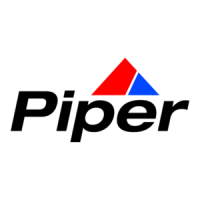
